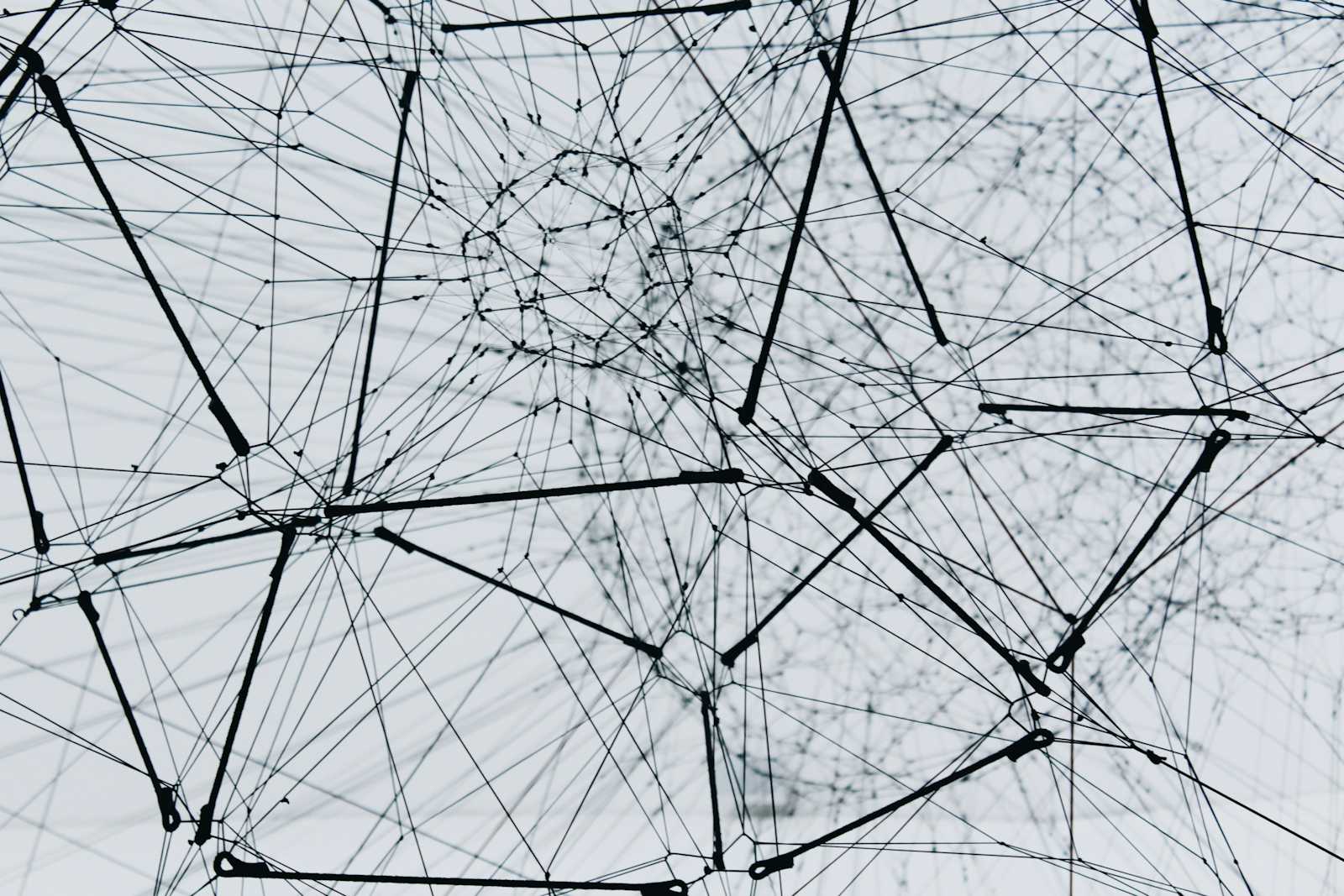Navigating the Digital Seas: An In-Depth Guide to Internet Protocols
 Hope Kenga
Hope KengaTable of contents
- Introduction
- Historical Context
- Understanding Internet Protocols
- Types of Internet Protocols
- Detailed Exploration of Key Protocols
- Other Essential Internet Protocols
- Glossary of Key Internet Protocol Terms
- Current Trends and Future Developments in Internet Protocols
- Challenges and Considerations
- Conclusion: The Ever-Evolving World of Internet Protocols

Introduction
In our digitally-driven era, the smooth operation of the internet is something most take for granted. Yet, the seamless experience of browsing websites, sending emails, and transferring files is made possible by a complex and fascinating system of rules known as Internet protocols. These protocols are the unsung heroes of our digital lives, ensuring efficient, reliable, and secure communication across the vast network that connects the world.
The aim of this article is to shed light on these essential components of digital communication. We will explore what Internet protocols are, their various types, and their indispensable role in our daily digital interactions. This guide is designed for a diverse audience, whether you are a curious novice keen to understand the basics or an IT professional seeking to deepen your technical knowledge.
Historical Context
The Dawn of Internet Protocols
The story of Internet protocols begins in the late 1960s with the development of ARPANET, the first network to implement the TCP/IP protocol suite which laid the foundation for today's Internet. The need for a standardized way of sending and receiving data over a network became evident as more computers were connected.
Milestones in Protocol Evolution
One of the most significant milestones in the history of Internet protocols was the introduction of the TCP/IP model in the 1980s. This model provided a set of guidelines that allowed different computer networks to interconnect and communicate. The establishment of the World Wide Web in the 1990s marked another pivotal moment, as it popularized the use of the Internet among the general public. Over the years, protocols have evolved to meet the demands of increasing speeds, bandwidth, and security concerns.
Understanding Internet Protocols
What Are Internet Protocols?
At their core, Internet protocols are a set of rules or standards that dictate how data should be transmitted and received over a network. These protocols ensure that data sent from one computer is received correctly by another, no matter their location or the path the data takes to get there.
The Role of Protocols in Digital Communication
Internet protocols are crucial for a variety of reasons. They provide a common language for different devices to communicate, ensure data integrity during transmission, and help navigate the data to its correct destination through complex networks.
Types of Internet Protocols
There are numerous Internet protocols, each serving a specific purpose. They can be broadly categorized into communication protocols like TCP/IP, data transfer protocols like FTP, and security protocols like SSL/TLS.
Detailed Exploration of Key Protocols
TCP/IP: The Backbone of the Internet
The Transmission Control Protocol/Internet Protocol (TCP/IP) is the fundamental protocol suite that the Internet is built upon. It dictates how data should be packetized, addressed, transmitted, routed, and received at the destination. TCP is responsible for breaking down data into packets and ensuring their reliable delivery, while IP handles the addressing and routing of these packets.
HTTP and HTTPS: Protocols of the Web
Hypertext Transfer Protocol (HTTP) is the protocol used for transferring web pages over the Internet. When you visit a website, your browser uses HTTP to request web pages from a server. HTTPS (HTTP Secure) is the secure version of HTTP, encrypting data to prevent eavesdropping and tampering.
FTP: Facilitating File Transfers
The File Transfer Protocol (FTP) is used for transferring files between a client and a server on a network. It's a vital protocol for uploading files to a server or downloading files to your computer. FTPS is a secure version of FTP, which adds a layer of security by using SSL/TLS protocols.
Email Protocols: SMTP, IMAP, POP3
Simple Mail Transfer Protocol (SMTP) is used for sending emails, while Internet Message Access Protocol (IMAP) and Post Office Protocol 3 (POP3) are used for retrieving emails from a server. IMAP is more flexible and complex, allowing multiple clients to manage the same mailbox, while POP3 is simpler, downloading emails to a single device.
Other Essential Internet Protocols
DNS: The Internet’s Phonebook
The Domain Name System (DNS) plays a critical role in how we interact with the Internet. It's akin to a phonebook for the Internet, translating human-readable domain names (like google.com) into the numerical IP addresses needed for locating and identifying computer services and devices. Without DNS, we would need to remember the IP addresses of every website we want to visit, which is impractical.
DHCP: Dynamic Host Configuration Protocol
The Dynamic Host Configuration Protocol (DHCP) is a network management protocol used on IP networks. When a device connects to the network, DHCP automatically assigns it a unique IP address, eliminating the need for a network administrator to manually assign IP addresses to each device.
SSL/TLS: Securing Online Transactions
Secure Sockets Layer (SSL) and its successor, Transport Layer Security (TLS), are protocols used for securing communications over computer networks. They are most commonly used in web browsing, email, instant messaging, and voice-over IP (VoIP) applications. These protocols encrypt the data being transmitted, ensuring that it cannot be read by any third party.
ICMP: Internet Control Message Protocol
The Internet Control Message Protocol (ICMP) is used by network devices, like routers, to send error messages and operational information. For example, if you request a webpage that doesn’t exist, ICMP delivers the message back to your computer that the page is unreachable.
SNMP: Simple Network Management Protocol
Simple Network Management Protocol (SNMP) is used for collecting information from, and configuring, network devices such as servers, printers, hubs, switches, and routers on an Internet Protocol (IP) network.
Glossary of Key Internet Protocol Terms
IP Address
An IP (Internet Protocol) address is a unique string of numbers separated by periods or colons that identifies each computer using the Internet Protocol to communicate over a network.
Packet
In networking, a packet is a small segment of a larger message. Data sent over the Internet is broken down into packets. These packets are then reassembled to form the original message when they reach their destination.
Router
A router is a networking device that forwards data packets between computer networks. Routers perform traffic directing functions on the Internet, ensuring that data sent from one place reaches the correct destination.
Port
In the context of computer networking, a port is an endpoint of communication in an operating system. While an IP address allows you to identify a network, a port number identifies a specific application or service running on that network.
Encryption
Encryption is the process of encoding data or information in such a way that only authorized parties can access it. In the context of Internet protocols, encryption is used to secure the transmission of data over the Internet.
Bandwidth
Bandwidth refers to the maximum rate of data transfer across a given path. In networking, it's often used to measure the amount of data that can be sent over a network connection in a given amount of time.
Latency
Latency refers to any kind of delay that happens in data communication over a network. It's typically measured as the time it takes for a packet of data to get from one designated point to another.
Protocol Stack
A protocol stack is a set of network protocol layers that work together. The TCP/IP stack, for instance, is a protocol stack that includes TCP and IP as its layers, along with others.
Current Trends and Future Developments in Internet Protocols
Emerging Protocols and Innovations
In the dynamic world of Internet technology, protocols continually evolve to meet new challenges and leverage advancements. Recently, there has been significant interest in protocols like HTTP/3, which promises to improve upon its predecessors in terms of speed and reliability. Another area of innovation is in the development of more secure and efficient versions of existing protocols, such as the ongoing enhancements to TLS.
Internet of Things (IoT) and Protocols
The proliferation of IoT devices has spurred the development of new protocols that cater to the unique needs of connected devices, such as constrained power usage and limited processing capabilities. Protocols like MQTT (Message Queuing Telemetry Transport) and CoAP (Constrained Application Protocol) are gaining prominence in the IoT sphere.
The Future of Internet Protocols
Looking ahead, the future of Internet protocols is likely to be shaped by the increasing demand for faster, more secure, and more efficient communication. The expansion of 5G networks, for instance, will necessitate protocols that can handle higher data rates and lower latency. Additionally, the growing emphasis on privacy and data security might drive the creation of new protocols or the modification of existing ones to incorporate more robust security features.
Challenges and Considerations
Security Challenges
As the Internet becomes increasingly integral to our daily lives, the security of Internet protocols becomes more critical. Protocols must evolve to counteract emerging cyber threats, including advanced malware, phishing attacks, and network intrusions. Ensuring the encryption and integrity of data as it travels across the network is a continuous challenge.
Compatibility and Standardization
One of the ongoing challenges in the development of Internet protocols is maintaining compatibility between new and existing protocols. As new protocols are developed, they must be designed to work seamlessly with the vast and varied existing network infrastructure. Additionally, standardization across different devices, platforms, and countries is crucial for the global functionality of the Internet.
Balancing Performance and Complexity
As protocols become more advanced, they also become more complex. Balancing the performance benefits of advanced protocols with the need for simplicity and ease of use is a key consideration. This is particularly important in ensuring that new protocols can be widely adopted and implemented.
Conclusion: The Ever-Evolving World of Internet Protocols
As we have explored in this comprehensive guide, Internet protocols are the linchpins of digital communication, silently working behind the scenes to ensure that our online interactions are smooth, reliable, and secure. From the foundational TCP/IP suite to the specialized protocols for IoT devices, these sets of rules and standards are integral to the functioning of our connected world.
The historical journey of Internet protocols from their inception in the ARPANET era to their current state has been marked by continuous evolution and innovation. As we look to the future, it is clear that this evolution will not only continue but likely accelerate. Emerging protocols, the expansion of IoT, and advancements in network technologies like 5G are set to redefine the landscape of digital communication.
However, this evolution is not without its challenges. The increasing complexity of protocols, the need for enhanced security measures to counteract sophisticated cyber threats, and the importance of maintaining compatibility and standardization across a diverse and sprawling Internet infrastructure present ongoing challenges for technologists and policy-makers alike.
As we navigate these challenges, the role of Internet protocols in our daily lives and their impact on the future of digital communication cannot be overstated. They are, and will continue to be, the bedrock upon which the Internet operates, shaping how we connect, communicate, and interact in our increasingly digital world.
In conclusion, the world of Internet protocols is a dynamic and fascinating field, one that offers endless avenues for exploration and innovation. As we continue to rely more on digital technologies, the importance of understanding and developing these protocols becomes ever more paramount.
Subscribe to my newsletter
Read articles from Hope Kenga directly inside your inbox. Subscribe to the newsletter, and don't miss out.
Written by

Hope Kenga
Hope Kenga
Hi, Software Developer here 🍲 A nerd who likes the scent of old books . May the code be with you 🌙.